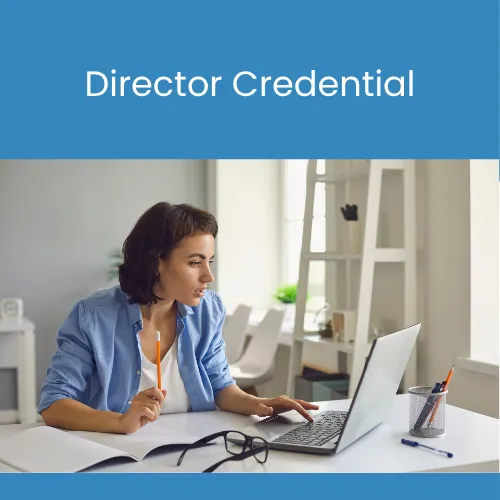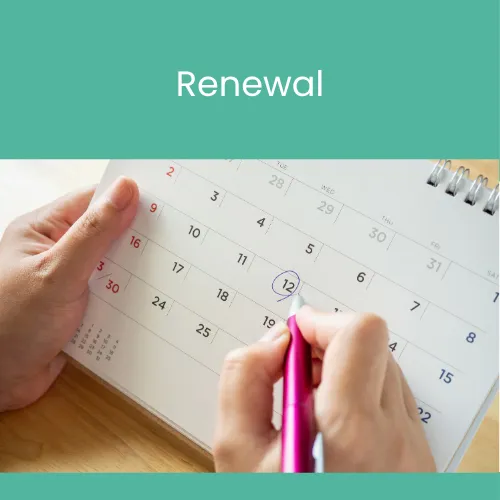Find Everything You Need.
See Our Latest Blogs
Stay up-to-date with our latest insights, tips, and trends by diving into our newest blogs. Whether you're seeking industry expertise, marketing strategies, or product inspiration, our blog section is your go-to resource for valuable content.

How to Start a Daycare in Texas
Step-by-Step Guide for 2025
If you’ve been Googling “how to start a daycare in Texas,” you’re in the right place. Starting a childcare center is more than filling a room with toys and love—it’s a legal, financial, and leadership project that trips up many first-time owners. But with the right steps and a little expert guidance, you can turn your vision into a thriving childcare business. This guide shows you how to do it the right way from day one.
Opening a daycare in Texas or anywhere else in the world can be quite daunting. There are literally hundreds of decisions that you need to make. I made those decisions, and you can too. Just take it one step at a time.
If you are thinking about opening a Daycare, Childcare, Mother’s Day Out, Preschool, or Afterschool program (or any of the 20 other titles for an early childhood program), I’m sure your brain is buzzing with 1,0000 thoughts of how you will run the program, what equipment you will need, who you will hire, etc. I get it. I was the same way before I opened my first program.
Write It Down / Capture Your Vision: Step 1
Get yourself a notebook and write those thoughts down as they occur to you. You can use a notes app on your phone if you prefer, but the science says that manually writing helps to organize and quiet the thoughts. Once it is written down, your brain knows you’ve got this idea. Organize your idea catcher however you want.
This is just for you.
You will use it often. Because the ideas will hit you at all hours of the day or night. Catching them & putting them in the notebook will make the rest of this process much easier, and your final program is more likely to reflect your vision.
This framing of your vision is separate from the tasks of actually opening a program.
In this article, I outline the steps for opening a daycare in Texas, but these steps are generally the same in any state. The specific government agencies and references to licensing requirements will vary.
The first step is a bit of introspection. Are you ready to be a boss? As the owner of a school, you will be the boss of all the staff, all the children & responsible to the parents and regulators. You must be mentally and emotionally prepared.
Make sure you are comfortable with saying “NO.” The owner must say it a lot. “No, you can’t have that day off.” “No, you cannot pay tuition next Tuesday.” “No, you cannot spend that money.” “No, we don’t have the money to hire an assistant right now.” “No, I don’t think that service is right for us at this time.” Some of the nos can be practiced as a Director for someone else, but others just relate to being the owner.
The buck will stop with you.
Are you prepared to deal with all the bucks? Not just the proverbial ones that stop with you, but also the real ones. All the tuition, payroll, budgets, finance statements, and bills. They will all be your responsibility. If you aren’t good at budgeting in your household…you need to work on that before you open your program.
Do you have decent credit? You will need that in order to rent or buy your location. Again, if you don’t yet, take a bit of time & work on this aspect.
You will have all the financial and legal liability. That also means that you get to do things exactly as you want (within the confines of regulations. Get yourself ready for those new responsibilities.
If you feel ready to be a boss, then you are ready to go on to the next step. If not, then get yourself a coach, take classes, or find a mentor to help you with the area(s) of being a boss that you need help with.
Step 2: Define Your Vision and Capture Your Daycare Ideas
Before you dive into licensing forms or building layouts, take time to define your vision. The most successful childcare centers start not with a checklist—but with clarity. What kind of program are you creating? What will make it different? What values will shape every decision?
📘 Pro Tip: Download our free “Daycare Startup Brain Dump Template” to help you organize ideas fast.
Now it is time for your first decision.
Choose Your Childcare Program Type in Texas
Before applying for a license or leasing a building, you need to decide what type of childcare program you want to open. In Texas, your licensing category will shape your space, staff, operations, and even insurance requirements.
What type of program/school do you want to open? In Texas, there are 6 different types of childcare according to licensing.
Listed childcare home
Registered childcare home
Licensed group home
Licensed child care center
Licensed before or after school program
Exempt childcare programs
This article won’t go into each of those types of programs, but feel free to drop a message below with questions about the different types of care, and I’ll be happy to answer them.
You need to decide whether to offer in-home or commercial childcare.
Home-Based Daycare
Operating out of your home can be a wonderful and affordable option, especially when you're just starting out.
Ask yourself:
Which rooms will be used for the daycare?
Which parts of your home will remain off-limits?
How will you maintain boundaries between work and personal life?
It’s essential to establish a clear physical and emotional separation between your daycare space and your personal space to prevent burnout.
Commercial Childcare Center
If you’re going the commercial route, you’ll need to:
Find a building that meets licensing requirements
Check municipal or county zoning regulations
Understand fire safety and occupancy codes
Some towns allow childcare programs in residential structures—but always check with local zoning offices before committing to a space.
✏️ Action Step:
Return to your notebook (or digital notes) and write out your decision:
What type of license are you aiming for?
Will your space be home-based or commercial?
What benefits or challenges does that bring?
Getting this clarity now will make the rest of your planning process far easier.
Step 3: Define Your Daycare’s Educational Philosophy
Once you've chosen your license type and location, it’s time to craft the heart of your childcare program—your educational philosophy. This will shape everything from daily routines and curriculum to your hiring decisions and how families perceive your center.
What will the vibe be at your program? Will you be following a popular educational philosophy, such as Montessori or forest schooling? What will be the role of the teachers be? How many children do you want in each age group? What will the children eat? How will the curriculum be set up?
All these and more are questions you will have to answer in determining your educational philosophy.
Why Your Philosophy Matters
Your daycare’s philosophy communicates:
What children will experience daily
How teachers interact and guide learning
The overall “vibe” of your space
What families can expect when they enroll
Your educational philosophy serves as the foundation for your handbooks, the individuals you will hire, the marketing strategies you will employ, the allocation of your resources, your standard operating procedures, and the design of your space.
Whether you align with Montessori, Reggio Emilia, faith-based learning, or something entirely unique—clarity is key.
Questions to Help Define Your Philosophy:
What do you believe about how young children learn?
Will your program be structured, play-based, or a mix?
How will meals, naps, and free time be handled?
What role do teachers play—guides, instructors, nurturers?
What values are most important: creativity, discipline, independence, community?
✏️ Action Step:
Use your notebook or idea journal to write freely about:
How should your space feel?
What kind of staff do you want to hire?
What does a “great day” at your center look like?
After brainstorming, condense your ideas into a 1–3 sentence philosophy statement. Bonus points if you can distill it into a memorable phrase or slogan like “Learning through laughter” or “Rooted in curiosity.”
📘 Pro Tip: Your educational philosophy will guide your policies, hiring practices, and even your marketing strategies. It’s more than a nice paragraph—it’s your foundation.
Step 4: Choose the Right Legal Structure for Your Texas Daycare
Before you register your business name or open a bank account, you’ll need to decide what type of legal entity your daycare will operate under. This decision affects everything from taxes and liability to paperwork and funding options.
Legal Business Structures to Consider:
Here are common business entity types for childcare providers in Texas:
Sole proprietor – Simple to set up; you’re personally liable.
Partnership – Shared ownership; shared responsibility and liability.
LLC, Limited Liability Corporation – Protects personal assets; popular for small businesses.
LLP, Limited Liability Partnership – Like an LLC but for partners.
S Corporation – Offers tax advantages and liability protection.
C Corporation – Suitable for large businesses with shareholders.
Non-profit Corporation – Ideal for mission-driven, grant-eligible programs.
Each structure has pros and cons depending on your goals, funding, and growth plans.
I am not a lawyer, and I don’t play one on TV. I cannot tell you which legal structure is best for you & your business. I can, however, tell you what your options are & then point you to things lawyers or the State have said about each of the different types of business structures.
Do You Need a Lawyer or Accountant?
Yes—consulting a professional at this stage can save you serious headaches later. A lawyer or CPA can guide you through:
Selecting the best structure
Registering with the state
Filing required documents (like Articles of Organization)
If you don’t already have an accountant or attorney, start asking for referrals now—you’ll need them as your business grows.
“But I don’t have a lawyer or an accountant.”
I hear you. The thing is, you need to find one. As a business owner, you will need a team of advisors. Both an accountant and a lawyer are essential for running a successful business. If you need help finding a lawyer or an accountant, message me & I’ll provide referrals or suggest places to look.
✏️ Action Step:
In your notebook or planning tool, write down:
Which business structure feels most aligned with your goals?
What questions do you need to ask a professional?
When will you schedule a consultation?
📘 Pro Tip: Your legal structure also affects how you’ll pay taxes and whether you can apply for grants, loans, or nonprofit status—choose wisely.
Step 5: Name Your Daycare Program
Now comes one of the most exciting—and surprisingly strategic—parts of starting your childcare business: naming your daycare. A strong name helps you stand out, communicates your values, and sets the tone for your brand.
You can name it after you, your area, your educational philosophy, or anything else. The possibilities are vast.
What Makes a Great Daycare Name?
A great name is:
Memorable and easy to spell
Reflective of your values or location
Unique and not already in use locally or online
Popular naming themes include:
Nature or play-based words (e.g., “Little Sprouts Learning”)
Geographic identifiers (e.g., “Hill Country Kids”)
Philosophical focus (e.g., “Curious Cubs Academy”)
Personal legacy (e.g., “Miss Carrie’s Corner”)
Brainstorm about 20 different names that you like. This may take you 5 minutes or several days. Just keep going until you have at least 20 names.
Now, Google each of those names. Any that don’t show up in the search go to the top of your pile. Ones that do show up, that you love, will need to be researched a bit more. Ones that show up that were just meh, can be discarded.
Research Before You Commit:
For the ones that showed up in Google, you need to see
If they have the URL (web address) that you would want
If they have social media accounts for that name
where they are located (would it cause confusion)
Is the name trademarked?
Now you have your list of names that didn’t appear in a web search and those that did, but are still viable. Pick your favorite & start making it your own.
File a doing business as (DBA) at your county office
Buy the URL
Get the social profiles for that name (Twitter/X, Instagram, TikTok, Facebook, LinkedIn, Pinterest, etc.)
File the business paperwork needed based on the business type you chose with the Secretary of State (if needed)
📘 Pro Tip: Even if you're not building your website yet, buy the domain now so no one else grabs it!
Now celebrate this win! You officially have a name.
It is important to celebrate milestones in this process. This is a big deal. Treat it as such.
Step 6: Complete the Paperwork and Make It Official
Now that you’ve chosen a name and legal structure, it’s time to turn your vision into a real, legally recognized business. In Texas, starting a daycare involves several key steps to ensure you're operating within the law—and prepared for the financial aspects of the business.
First, you’ll need to apply for a federal Employer Identification Number (EIN) through the IRS. Think of this as your business’s social security number. You’ll use it to open a bank account, file taxes, and identify your business on official forms.
Speaking of bank accounts—don’t skip this step. Keeping your daycare finances separate from your personal ones will save you stress (and probably money) down the road. Once your EIN is in hand, open a dedicated business checking account. If you’ve already paid some startup costs out of pocket, go ahead and reimburse yourself from that account to start with clean books.
If you plan to hire staff (now or in the future), you’ll also need to register as an employer with the Texas Workforce Commission. And while you’re thinking ahead, consider securing general liability insurance for your center, and possibly workers’ compensation coverage if required.
Some additional steps to consider:
Registering your business with your county or city (especially if you're in a metro area)
Trademarking your name to protect your brand
Verifying your local zoning regulations or occupancy permit if you're not home-based
Finally, bookmark the Texas Health and Human Services (HHS) Child Care Licensing portal—you’ll use it throughout the next phases of your journey.
This may feel like a lot of paperwork, but each document you file is a building block in your foundation. You’re no longer just dreaming about your daycare—you’re creating it.
📘 Pro Tip: Keep a folder—physical or digital—with all your EIN confirmations, registration paperwork, and license applications. Staying organized now makes compliance much easier later.
Step 7: Write Your Daycare Business Plan
This is the part that many aspiring daycare owners try to skip—but trust me, your future self will thank you for taking it seriously. A well-thought-out business plan is more than a formality. It’s your playbook, your north star, and your proof of purpose when you're seeking funding, hiring staff, or making tough decisions.
It starts with your mission or vision. A short description of
What are you trying to accomplish?
Who is involved in the business?
Who are your competitors & the need for care in the area?
Who are the Director & any known teachers? (might also talk about how you will hire)
Talk about all the marvelous things you’re going to do
How will you attract parents to your school?
Your financial status & projections (budget)
Your team of support folks (lawyer, coach, etc.)
The good news? If you’ve been following the steps so far—clarifying your vision, outlining your philosophy, thinking through your program type—you’ve already started.
So what goes into a daycare business plan?
Start with your mission and vision. Why are you opening this daycare, and what impact do you want to make in your community? Then describe your target market—who are the families you hope to serve, and why is there a need for your program in this area?
Next, outline your operational plan: your location, hours, staff structure, curriculum, and classroom setup. You’ll also want to describe how you plan to attract and retain families—your marketing strategy.
Then comes the money talk. Include a basic startup budget, expected operating costs, and your tuition structure. Even a simple spreadsheet is a powerful tool at this stage. If you’ll be applying for a loan or funding, this section will need to be a bit more polished and detailed.
And finally, list your support team—even if it’s just you, a mentor, and an accountant for now. Showing that you’re not doing this entirely solo adds credibility and accountability.
📘 Pro Tip: The Small Business Administration (SBA) offers great templates if you need help structuring your plan. Don’t let perfection stall you—write a draft, revise later.
This isn’t about impressing investors with flashy charts. It’s about making sure you’re building something sustainable, thoughtful, and uniquely yours.
If you plan to secure a loan or other outside funding to start your business, it will need to be a bit more formal, but no one expects it to be a document written by a Harvard MBA. They expect it to reflect your skills, knowledge & industry. Since the most likely place you will go for a loan is the Small Business Administration, I suggest using their templates for your business plan.
This should take you a bit of time, but don’t drag it out for months. Give yourself a deadline. It is like that research paper you had to write in school. You can let it become a big, scary thing that puts you into analysis paralysis, or you can write an outline and write a bit every day.
You got this!
You're Not Just Starting a Business—You're Creating a Legacy
At this point, you might be feeling a mix of excitement and overwhelm. That’s completely normal.
You’ve taken the first crucial steps—clarifying your vision, choosing a structure, sketching out your brand. But vision without execution leads to burnout. And the truth is, many would-be owners stall out right here—not because they lack passion, but because they lack the guidance and systems to keep moving forward.
But here's the truth: you’re standing at the edge of something big—and potentially overwhelming.
That dream in your notebook? It doesn’t become a reality without structure, support, and strategy.
Opening a childcare center in Texas isn’t just about loving kids or having a vision. It's a legal, financial, and emotional marathon—and the number of amazing people who start but never finish is heartbreaking.
Here’s why:
They miss a regulation and get denied licensing.
They set tuition too low and can’t pay themselves or their staff.
They hire the wrong people, burn out, and walk away before year two.
They freeze during inspections, or worse—get fined.
They never develop real leadership skills—and staff quit because of it.
These are real outcomes. We’ve seen it. We’ve lived it.
You don’t need to make those same mistakes.
If you’re serious about opening your own childcare program in Texas, it’s time to stop guessing and start building—with the right support from day one.
Take a Texas Director class.
You’ll gain clarity, tools, confidence—and a roadmap tailored to you.
And if you're still on the fence? That’s okay.
Let’s chat. Reach out with your questions—we’ll point you in the right direction, no pressure.
Because we don’t just want you to open a center.
We want you to thrive.
Why Taking a Director Class Isn’t Optional—It’s Foundational
Taking a director class with Texas Director isn’t just about meeting a licensing requirement (though we check that box too). It’s about building the leadership capacity, operational know-how, and strategic thinking you’ll need to open strong—and stay strong.
Here’s what you’ll get when you take our Director Certification program:
A step-by-step guide to the licensing process, so you can stop second-guessing.
Real-world insights from experienced directors, not just textbook answers.
Tools and templates for budgeting, staffing, marketing, and curriculum, ready to plug into your plan.
Access to a mentor and community, so you’re never left wondering what to do next.
Confidence—the kind that keeps you steady when the chaos hits.
This is the stuff no one teaches you in “how to start a business” blogs or Facebook groups. But it’s what makes the difference between a center that survives—and one that thrives.
Ready to Take the Next Step?
You’ve already invested your time in learning and planning.
Now it’s time to invest in the knowledge and support that turns a great idea into a great school.
👉 Click here to learn more about the Texas Director course
Still have questions? No problem—reach out directly. We’re here to help you navigate every step, from licensing to leadership.
Because your community needs what you’re building.
Let’s make sure it’s done right!
Texas Director ©2025 All Rights Reserved







